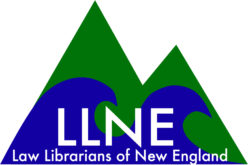Early on I went to one of the “Deep Dives” – the longer programs towards the beginning of the conference. “Inventing the new classroom.” Now I will admit a certain skepticism going in; at this point I’ve been to about 127 “Flipping the classroom” presentations, and while I try to remain receptive to new ideas, the ideas just don’t seem that new anymore.
I was wrong.
The presenters were fantastic, the way they presented was interactive, fun, and peppered with concrete examples and suggestions (I love going away with material I can implement in upcoming classes). I’m duty bound at this point to write an article for the ALL-SIS newsletter on this, but I wanted to share a few of the ideas that came out of the program:
One of the speakers talked about using Social Media as a teaching tool – playing into my skepticism. “Social media” says I, “I cannot imagine such a thing in the class – and frankly, students don’t want you in their social media teaching research.” But a few folks had some really cool suggestions, that I’m going to try to implement:
- Take pictures – or better yet, have students take pictures – of things that you think are (or ought to be) subject to regulation. Upload them to instagram, and then divvy them up in class, trying to find the relevant regulation(s) or statute(s). This is a great opportunity to talk about what kinds of things are regulated vs. what kinds of things are subject to statutory control.
- Again use instagram, but have students upload photos of signs where a controlling statute or regulation is actually noted on the sign.
- Create a blog, and have students do blog posts, and most importantly: have them create tags for these posts. Great way to teach about indexing, controlled vocabulary, subject access – you know: headnotes. I suppose the blog posts could be related to just about anything….
- Have students create checklists or flowcharts for a legal research process (e.g. “researching something controlled by regulations.”). Have them give this flowchart to another student to follow to precisely & see how accurately they’ve described the research process. This recalls challenges of my youth: “write step-by-step instructions for making a fluffernutter – now give it to someone and have them follow it precisely” (which always ended with fluff and peanut butter covering everything, and no sandwich). PS: if you’re going to do this, you cannot have shown them the appendix to Amy Sloan’s research books, which include such charts.
OK, so this last one isn’t exactly social media – but it does sound kind of cool, right? There is more to come on this “Deep Dive,” but I wanted to whet the appetites of our abundant readership.

Brian,
Thanks for this post. I was unable to attend AALL this year and I know I was missing all kinds of fun sessions. Thanks for sharing your experiences with us. I like the first suggestion – taking pictures of things that require regulation and then finding them. Sounds like it would illustrate so many concepts.